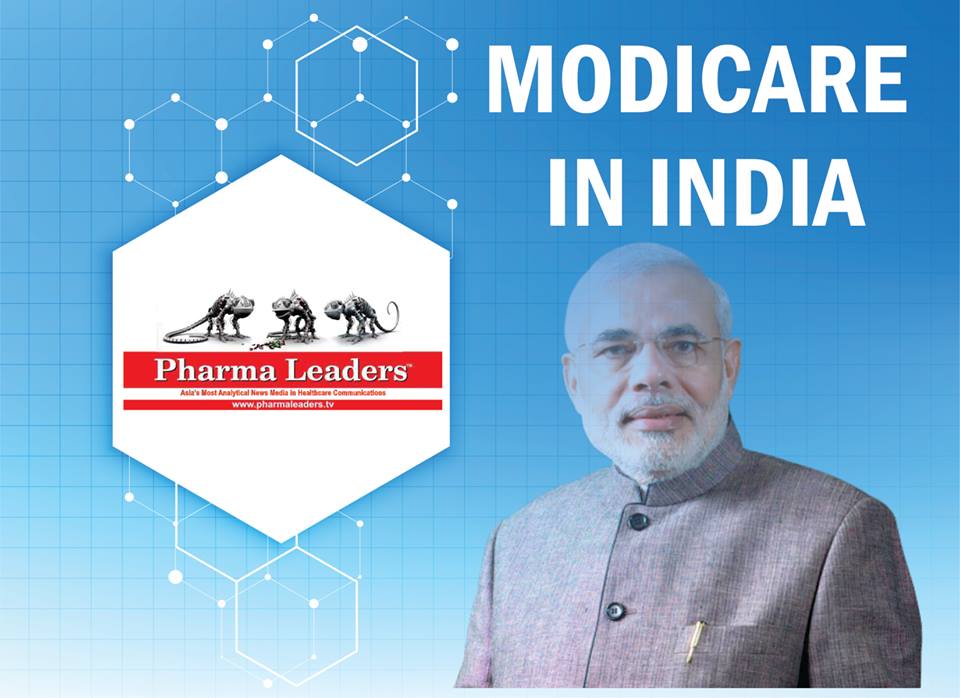Modicare in India : Will India see the impact?

Prime Minister Narendra Modi’s Independence Day speech was headlined by the announcement of the Pradhan Mantri Jan Arogya Abhiyan, previously Ayushman Bharat. The National Health Protection Mission (NHPM), or “Modicare”, will roll out on 25 September. It is expected to provide basic health insurance cover for 100 million families, based on a range of socioeconomic deprivation criteria culled from the Socio-Economic Caste Census 2011 (SECC). The scheme will provide coverage up to ₹500,000 per family for secondary and tertiary care and is expected to cost ₹11,000 crore per year. This cost will be shared according to a 60-40 formula between the Centre and states.
While many details remain to be worked out, and funding and implementation challenges will be considerable, the attempt to create a publicly-funded national health insurance scheme for the poorer half of the population is an ambitious and laudable goal. This is an era of a backlash against liberalization and globalization everywhere, driven by people’s inchoate sense that they have been the losers of market-based economics. It is even truer in a vibrant and politically-competitive democracy with many poor voters, such as India, that capitalism and the market system must prove their legitimacy each and every day.
An important component of creating and sustaining political legitimacy for the market, which is key for the pursuit of further liberalizing reforms, is laying the foundations for a re-engineered welfare state for India that provides basic public goods to the most deprived members of society. The irony is that decades of socialism and central planning in India, emanating from Jawaharlal Nehru’s vision, failed to achieve this. We have created a welfare apparatus that is corrupt, wasteful, and ineffective in addressing the needs of the poorest. One telling fact testifying to this is that out-of-pocket expenses account for a whopping 67% of total health spending. This is 12th highest among all nations and sixth highest even amongst lower and middle-income countries.
The object of a well-functioning publicly-funded national health insurance scheme must clearly be to reduce the financial burden on the poorest of illness, both chronic and catastrophic. Yet, we would caution that unless supplemented with ancillary policy innovations, Modicare by itself is unlikely to achieve its objectives. In particular, the scheme covers only the costs of treatment and hospitalization at the secondary and tertiary levels. Notably, out-of-pocket expenses—such as medications and diagnostic tests—are not covered. We are not suggesting that the proposed coverage of Modicare be expanded to cover such expenses. Our argument is a different one.
Modicare does not extend to primary healthcare, which, we believe, is the weakest link in the provision of public health in India. As much as 55% of households in India opt for privately provided primary healthcare, even though free government-provided primary care, in theory, exists down to the village level. Clearly, this system is not working. The crucial point is that poorly delivered primary care inevitably increases the burden on health and finance at the secondary and tertiary levels down the line.
Data from the National Family Health Survey (NFHS-4, 2015-16) shows that almost half of respondents cite the poor quality of public health provision as the reason for preferring private care. Other reasons include the absence of a nearby facility, long wait times, inconvenient timings, and even the fact that health personnel are simply not present to do their job (according to about 15% of those surveyed).
The clear upshot is that, unless supplemented with accessible, affordable, and high-quality primary healthcare, publicly-funded health insurance that focuses making secondary and tertiary healthcare more affordable will only have a marginal impact on improving overall health outcomes for the poor and disadvantaged. It could end up costing the government much more than it should. While Modicare rightly allows insurance to be used at both public and empanelled private hospitals and clinics, recognizing the reality that much of secondary and tertiary healthcare is, in fact, privately provided, by itself, it cannot address an important market failure at the primary level.
The libertarian argument that a voucher system works better than public provision of primary education does not translate well to primary healthcare provision in India because of the absence of adequate or any privately provided primary healthcare in the poorest and more remote rural regions of the country. There are people so poor that private providers simply will not deliver care at a market-determined price for lack of affordability. Besides, hardly any private doctors or healthcare professionals are willing to serve in rural locations—indeed, a catastrophic market failure. For much of rural India and the most disadvantaged of our citizens, public provision of primary healthcare remains the only solution. Regrettably, this system has thus far failed to deliver, forcing most Indians to turn to whatever private care they are able to afford.
With all of the discussion about Modicare, few may have noticed that this year’s Union budget, which created Modicare, also announced the creation of 150,000 publicly provided “health and wellness centres”. These are presumably targeting remote and under-served areas, with a budget of ₹1,200 crore in the current fiscal year. These are evidently intended to supplement the faltering public primary healthcare sector. Indeed, Union finance minister Arun Jaitley went so far as to describe these new centres as the “foundation of India’s health system” in the budget speech. If, indeed, they are given their due prominence in a holistic approach to healthcare, with sufficient funding and adequate capacity to deliver basic primary healthcare to the most vulnerable, we would be much more sanguine about the chances for long-term success of Modicare.
Centre and states
Modicare coverage premiums will be shared between the Centre and the states in a 60:40 ratio. MoUs have been signed by 26 states so far. Some (West Bengal, Jharkhand, Nagaland and Manipur) have opted for a traditional insurance model. Others (Uttar Pradesh, Uttarakhand, Tripura and Himachal Pradesh) have chosen a Trust model, bypassing insurance companies and using Third Party Administrators (TPAs) to settle claims from a Trust corpus made up of contributions from the Centre and the state in the 60:40 ratio.
Yet others (Gujarat and Chhattisgarh) have opted for a hybrid model, combining a portion of coverage from public and private sector insurance companies and a portion from their own Trusts. To insure 50 crore Indians (in effect 10 crore families), certain rational assumptions have to be made.
First, not all 50 crore people are likely to fall ill and need hospitalisation in a single year. A high estimate would be 20 per cent (or 10 crore) claimants every year.
Second, not all these 10 crore patients are likely to use the full coverage of Rs 5 lakh available to them. A rational estimate, given that the majority will be treated in hospitals in small towns where medical costs are low, is Rs 2 lakh per patient per year, cutting actual reimbursements significantly.
This adds up to 10 crore people using on average Rs 2 lakh coverage per year or Rs 20 lakh crore. The effective annual premium at an average of 0.7 per cent would therefore be Rs 14,000 crore — not far from Rs 10,000 crore, budgeted under Ayushman Bharat for 2018-19.
This budget may rise in future years, but the range is well within the allocated parameters. The critics of Modicare are on firmer ground over the poor healthcare ecosystem in rural and small-town India where hospitals and healthcare centre are few (if any) and in appalling condition.
Building healthcare centres across India where 50 crore patients eligible for Ayushman Bharat can be treated is the real challenge for Modicare, not budgetary allocations.
Building healthcare infrastructure is a daunting task.
But without it, Modicare will be hobbled. The Union health ministry, along with its counterparts in the states, must take up this task on an emergency basis to allow the full benefits of Modicare to flow to India’s poorest families who have been without assured medical care since Independence.
narendra-modi-inside_082318104340.jpgBuilding healthcare infrastructure is a daunting task. (Photo: Reuters)
Selection criteria
How will 50 crore claimants be chosen for eligibility in Modicare?
The criteria for selection will be based on deprivation parameters in the Socio-Economic Caste Census (SECC). Modicare differs from medical insurance currently available from dozens of insurance companies in several ways. It includes pre- and post-hospitalisation costs. It also includes treatment for pre-existing diseases — a key departure from medical insurance schemes offered by public and private sector insurance schemes.
Building modern healthcare centres in tier-2 and tier-3 cities to which the rural population has easier access is critical. Without such secondary and tertiary healthcare centres, Modicare will be severely handicapped.
Besides, if the construction of hospitals and healthcare centres goes apace, there will be a surge in new employment opportunities in the infrastructure and healthcare sectors. The demand for doctors and nurses will rise, allowing medical expertise to percolate to underserviced areas in the country.
Difficult issue
Universal healthcare is a difficult issue worldwide.
In the United States, Obamacare has proved unpopular and has been systematically dismantled by its harshest critic, President Donald Trump, without a satisfactory alternative being put into place.
In Britain, the National Health Service (NHS), established by the post-war Labour government in 1948, is passing through a crisis. The annual NHS budget at £120 billion accounts for 7 per cent of Britain’s GDP.
The infrastructure is overstretched with waiting periods for surgeries routinely measured in months, not days.
Yet the NHS is a relative success, providing medical care from birth to death. It is not based, like Modicare, on an insurance model.
In India, an NHS-type healthcare infrastructure at 7 per cent of GDP would cost Rs 15 lakh crore annually — nearly the size of the entire Union Budget.
In that context, Ayushman Bharat’s insurance-based scheme is a strategically sound way to match available resources in a poor country with healthcare facilities every Indian deserves. Modicare will be judged on outcomes. And outcomes depend on professional implementation. Among dozens of welfare schemes launched by the NDA government, Modicare might well prove the most pivotal, given the potential impact it can have on the nation’s health.
